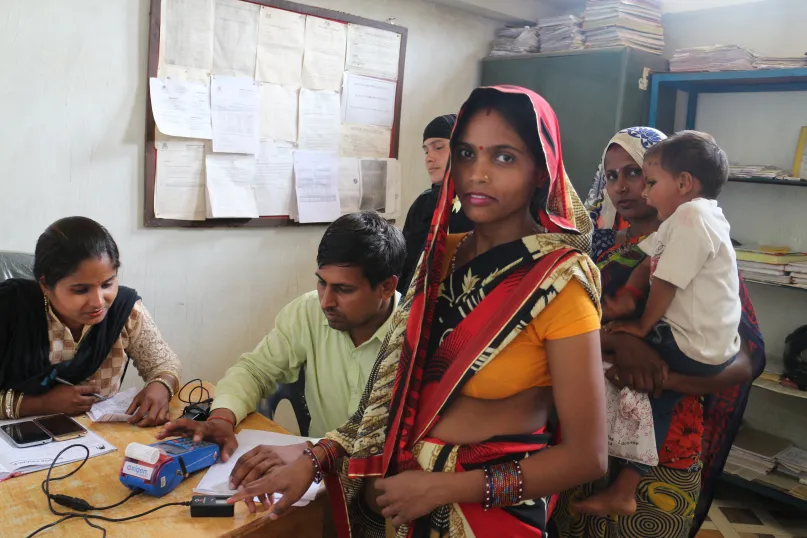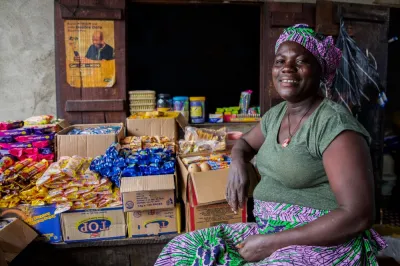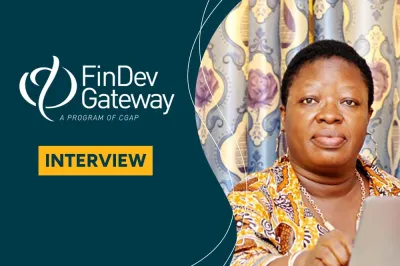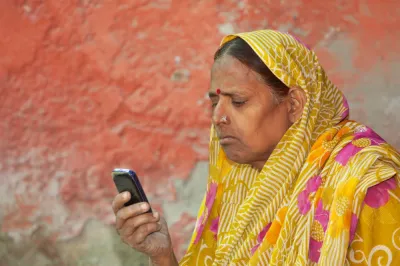Digital Winds of Change in Rural India

On the outskirts of Allahabad, India, poor, rural women are changing attitudes in their village and their lives. Most women in the village of Jhusi are striving to be financially stable by taking microloans for their small enterprises. Some are widows taking care of families. Some are helping their husbands. And some simply want to establish themselves as individuals. They are all thankful that microfinance and digital technology solutions are giving them the opportunity to live their lives on their terms.
For Rampati and her husband, it means finally being able to support their four children. The income from their small neighborhood shop was never enough and they couldn’t afford to send their children to school, let alone save. After receiving loans from Sonata Finance, a microfinance organization that serves over 200,000 poor rural women across the state of Uttar Pradesh, they were able to buy 12 goats to boost their family income. The additional income allowed them to send their children to school, and finally begin to save for future needs.
Though this may sound like another typical microfinance client success story, there is a subtle but path-breaking difference in this case. Digital solutions provided by Sonata Finance brought the bank within reach for Rampati by providing her access at her local Sonata branch. This allowed her to use her bank account for the first time, and as a result she is now able to track her income and expenses, understand the power of savings.
Bringing together a fintech and a microfinance institution
Rampati and the other women in Jhusi have benefitted from a project supported by Citi Foundation through its India Grant Innovation Program, that is helping women from poor communities use digital financial services to manage their funds. Developed by Grameen Foundation India (GFI), in partnership with Sonata and payment solutions provider Oxigen Services, the project has already trained 27,000 female beneficiaries of Sonata on digital financial services and financial education.
GFI has played a crucial role in this collaboration, liaising between the two very different institutions – a traditional MFI and a fintech – to build on each partner's strengths. GFI worked with Sonata to identify human as well as technology constraints they faced in serving their clients, and then worked with payment partner Oxigen, to identify solutions for these issues, such as the Micro ATM, an innovative technology that was simple and easy to replicate across Sonata branches.

Training field workers to prepare clients for change
Recognizing that the introduction of digital financial services would be disruptive to Sonata’s traditional MFI practices, GFI saw that there would be a strong need for change management learning across the Sonata network. Field workers needed to be trained quickly, and they needed job-aid videos to help them connect with clients and influence the change.
To help with this transition, GFI launched Grameen Learning Program (G-LEAP), to train frontline MFI staff to better serve the needs of clients like Rampati. G-LEAP is a mobile-based e-learning Android app that enables staff to get training anytime, anywhere using their smartphone. The app provides interactive text, videos and assessments on topics such as digital literacy, banking basics and preparedness, device technology operations, and effective management skills. To date, more than 400 Sonata frontline staff have used G-LEAP for self-learning and to train clients like Rampati on digital technology.
Aligning with government initiatives
This app is well-aligned with the government of India’s post-demonetization initiatives promoting the use of digital payment channels in everyday life. Various digital payment solutions like Aadhaar Enabled Payment System (AEPS), e-wallets, debit cards, and UPI (Unified Payments Interface) have been leveraged to make it convenient for people to conduct transactions. The AEPS has emerged as the simplest process for people living in rural communities to link their bank account to their government ID number and enable transactions using biometric authentication. For clients like Rampati, it is life-changing, as she no longer needs to visit her bank, stand in long queues to withdraw cash for payments, or worry about carrying cash. Equally important, these digital transactions create a banking trail and history that may allow her to receive better loan options and other financial services. Having an active bank account also makes her eligible for various incentives and government programs. All of this is made possible simply by the authentication of her biometrics at the Sonata branch.
150 Sonata branches across 66 districts in Uttar Pradesh state are now equipped with Oxigen’s Micro ATM devices, allowing branches to handle Aadhar payments and debit card transactions directly from clients’ bank accounts. Sonata will now be able to go completely digital and diversify its offering of financial products and services.
Digital technology can transform how we serve India’s poorest communities. Collaborations such as this one are helping women like Rampati use today’s tools to create a better tomorrow.


